ROSACEA
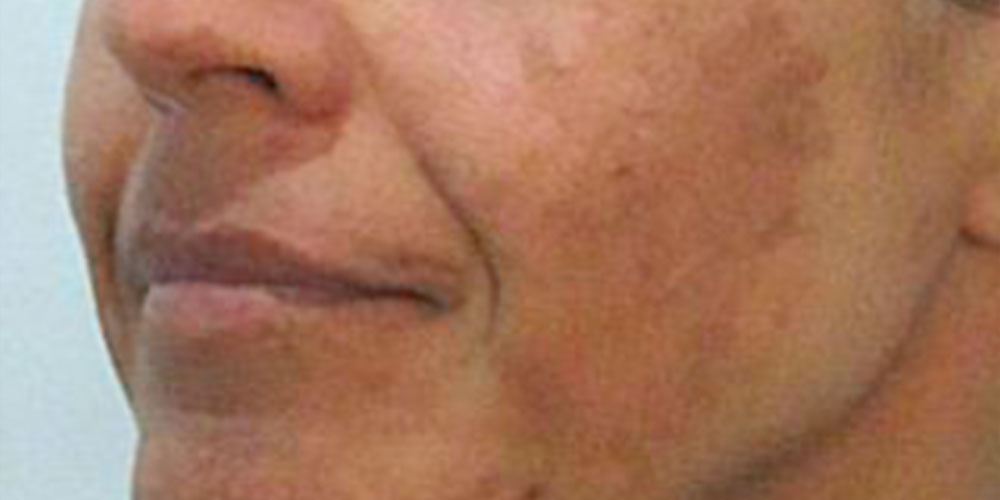

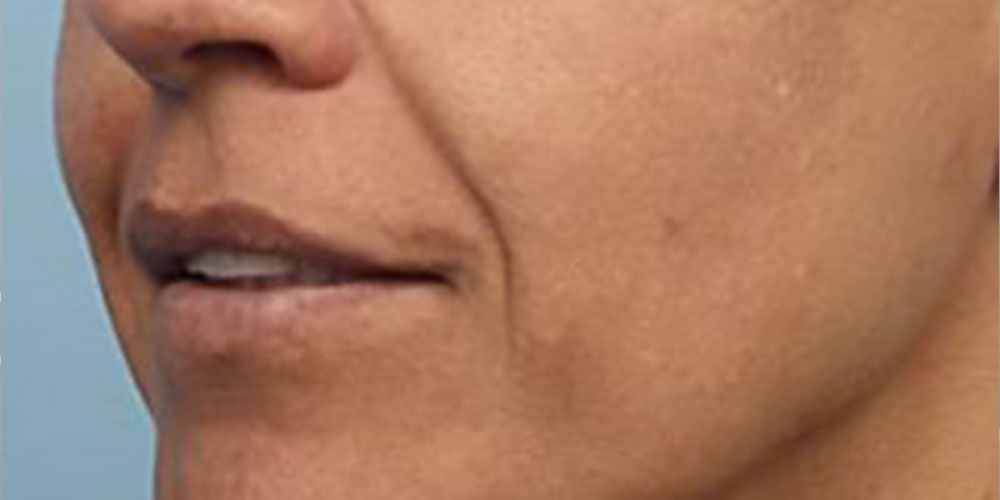
Rosacea is a disorder of the skin affecting 13 million people in the United States characterized by redness of the central face, especially the nose. Pimples (acne eruption), reddening and sensitivity of the eyes and thickening or enlargement of the nose (rhinophyma) also may accompany it. The expression of rosacea can be as mild as a slightly reddish appearing nose or “rosy cheeks”. It may also become severe, manifesting itself as a breakout of large red pimples, frequently infected or inflamed eyes, a greatly enlarged nose (“WC Fields” nose) or frequent incapacitating bouts of flushing.
WHAT IS ROSACEA?
Rosacea is a disorder of the skin affecting 13 million people in the United States.
The symptoms associated with rosacea may include flushing, blushing, burning, hot or itchy sensation of the face and occasionally swelling. Eye symptoms can include a sensation of something in the eye, dryness, itching, blurred vision or sensitivity to light. Some people have no symptoms.
Although rosacea commonly occurs in middle-aged women and men, it can present as early as the twenties and as late as the eighties. It is estimated that rosacea affects 30-40% of women over 40. Although rosacea is more common in women, men often have more severe disease. Men are particularly prone to rhinophyma, an enlargement or thickening of the nose.
WHAT CAUSES ROSACEA?
The true cause of rosacea is unknown. In one theory, bacteria present on the surface of the skin release chemicals causing blood vessels to dilate. In another theory a genetic predisposition to dilated blood vessels occurs, or a neural (nerve-related) abnormality causes a heightened flushing reaction. Yet another theory postulates a connection to the bacterium (Helicobacter pylori) causing stomach ulcers. More recent theories center on the primacy of inflammation. Some believe that a mite on the surface of the skin called demodex has a role because it has been demonstrated to be in increased amount in people with rosacea.
The bacterial theory is supported by the fact that rosacea is typically treated successfully with antibiotics. It is criticized because the bacterium involved has never been identified. Antibiotics have some inherent anti-inflammatory tendencies and some people argue this is the reason they are effective against rosacea. The association with stomach ulcers is controversial and not accepted by many rosacea experts.
There are many things that appear to make rosacea worse. The most common of these flare factors include alcoholic beverages, hot beverages or soup, spicy foods, wind, cold, heat, sun, exercise and emotional stress. In addition, people with rosacea often have very sensitive skin, meaning that they are easily irritated by skin care producst, especially those containing fragrance.
ARE THERE DIFFERENT TYPES OF ROSACEA?
Rosacea has been divided into 4 main types:
- Type I (Erythematotelengiectatic) consists of redness and dilated blood vessels only.
- Type II (Papulopustular) includes acne breakouts, in addition to redness and dilated blood vessels.
- Type III (Ocular Rosacea) features reddened eyelids, conjunctivitis, a “gritty” sensation in the eyes frequent chalazions (sties).
- Type IV (rhinophyma) consists of nasal enlargement that appears bulbous and is more common in men.
WHAT DOES ROSACEA LOOK LIKE?
People suffering from rosacea can look very different depending on which type of rosacea they have.
- Type I (Erythematotelengiectatic) consists of redness and dilated blood vessels only.
- Type II (Papulopustular) includes acne breakouts, in addition to redness and dilated blood vessels.
- Type III (Ocular Rosacea) features reddened eyelids, conjunctivitis, a “gritty” sensation in the eyes frequent chalazions (sties).
- Type IV (rhinophyma) consists of nasal enlargement that appears bulbous and is more common in men.
The symptoms associated with rosacea may include flushing, blushing, burning, hot or itchy sensation of the face and occasionally swelling. Eye symptoms can include a sensation of something in the eye, dryness, itching, blurred vision or sensitivity to light. Some people have no symptoms.
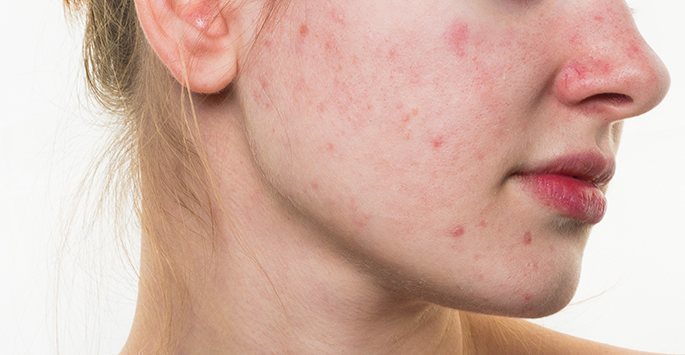
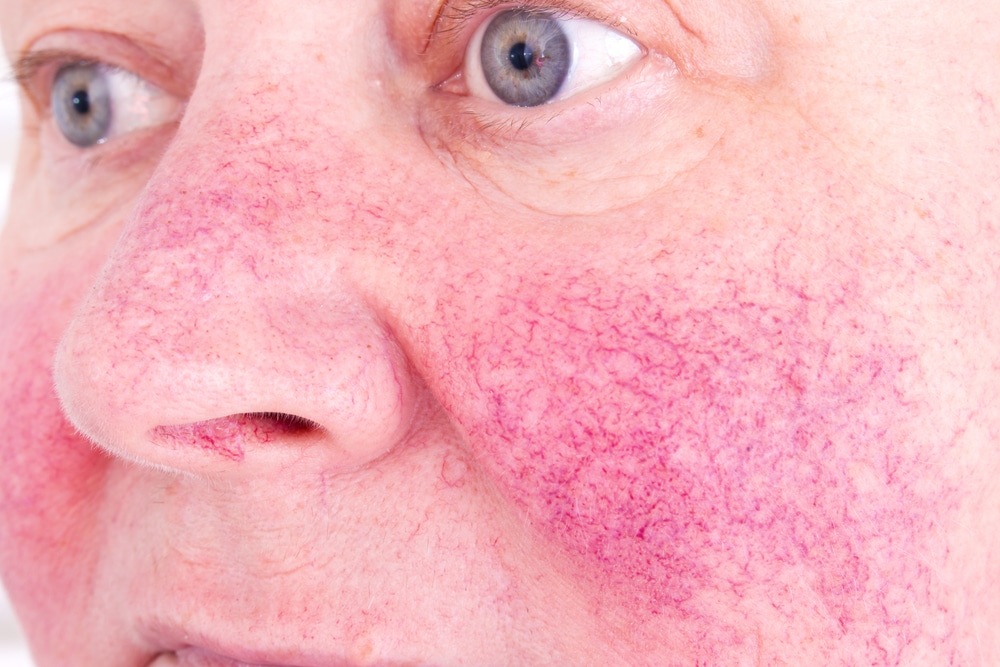
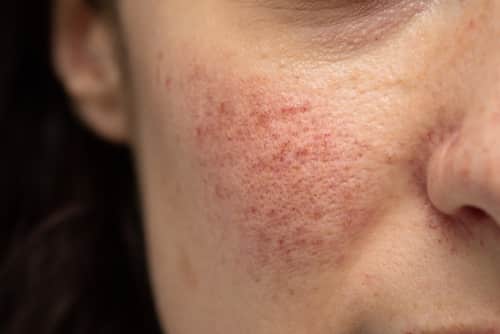
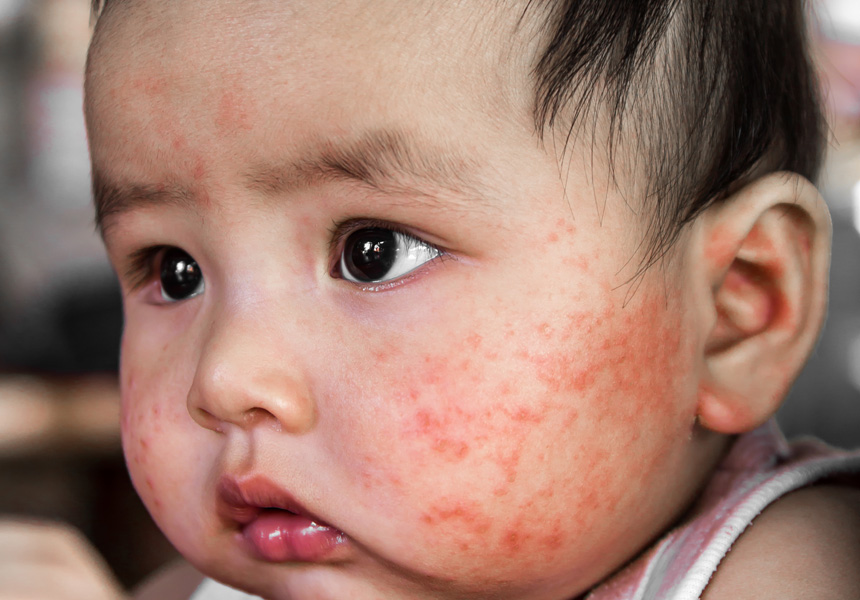
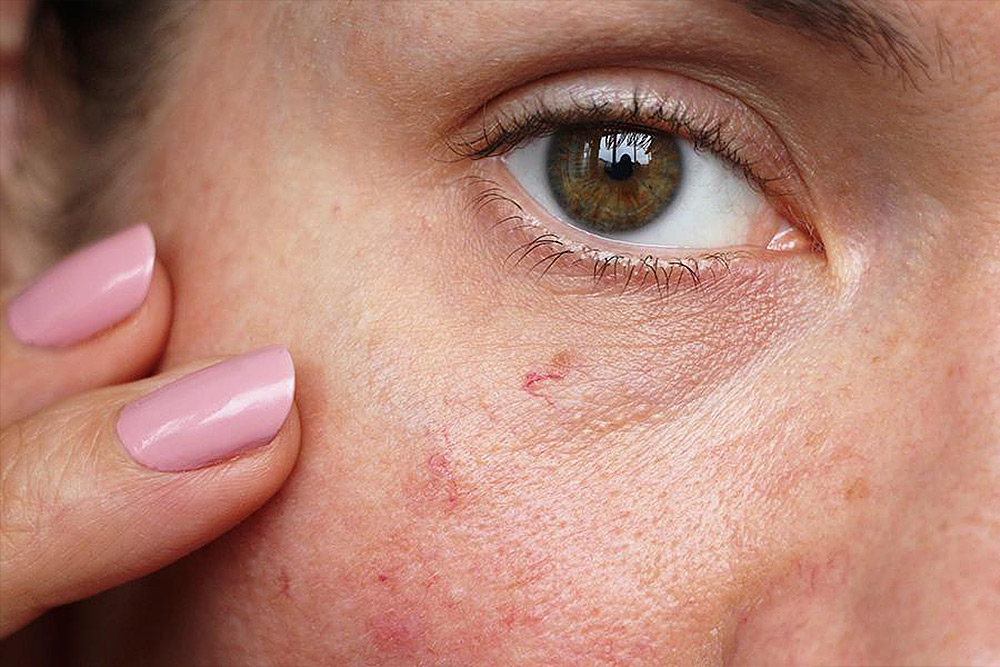
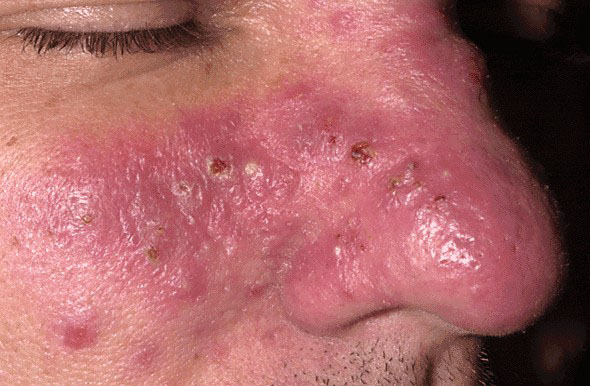
IS ROSACEA CURABLE?
Rosacea is a chronic condition and although it can be put in remission for a significant period of time, it is not curable. Topical therapy is generally recommended to maintain and treat this condition.
Products from skinfo® that are good for people with rosacea: For Treatment (adjunctive- should be used in conjunction with a topical prescription antibiotic) Skinfo® Vital Tea Serum and Cream- 90% Green Tea Extract Moisturizers: Kinerase Cream Skinfo® Vita Lite Moisturizer SkinCeuticals Face Cream Sun Protection: skinfo® Pure Block SPF 30 skinfo® Morning Security Cream SPF 30 SkinCeuticals Physical UV Defense SPF 30 Ultra-Dry Skin: Neostrata Biohydrating Cream Cleanser: skinfo® Clean But Not Dry Cleanser Kinerase Gentle Cleanser skinfo® Vital Tea Cleanser SkinCeuticals Foaming Cleanser SkinCeuticals Gentle Cleanser Acne Breakouts: MD Forte Glycare Perfection Gel skinfo® Clear Skin 5% Gel.
HOW CAN I TREAT ROSACEA?
The main treatments for rosacea are topical and oral antibiotics, anti-inflammatory agents, azelaic acid derivatives, laser surgery, avoidance of flare factors and special make-up techniques. There is no cure for rosacea.
A typical initial treatment course for mild to moderate rosacea would consist of employing a topical agent containing metronidazole (the antibacterial agent in Metrogel and Noritate) with or without an oral tetracycline derivative (Dynacin, minocycline, Doryx, doxycycline) depending on the presenting severity of the disease. Other topical agents commonly and successfully used for the treatment of rosacea include azelaic acid (Finacea and Azelex), Sulfacetamide with or without Sulfur (Plexion TS, Rosac AC, Klaron, Ovace, Sulfacet). Second tier oral antibiotics include erythromycin derivatives, sulfa derivatives and ampicillin.
Once a good response is achieved with the combination oral and topical antibiotics, the oral antibiotics are usually discontinued after 2-4 months. Remissions induced this way last much longer and are maintained in about twice as many individuals who remain on topical metronidazole therapy. Many people with moderate to severe rosacea are unable to discontinue their oral medications and stay clear.
Rosacea that is resistant to antibiotics usually benefits from treatment with oral isotretinoin (Accutane) . Accutane can be employed in different dosing strategies for this purpose. Some use a regular dosage for a few months to induce a remission, whereas others employ a low-dosage strategy.
Laser treatment has become a mainstream and important method for controlling rosacea. In people with rosacea, the blood vessels of the face dilate more than average and often don’t go back to their more closed resting state when the stimulus( such as heat, a glass of wine, the sun) is gone. Over time, the vessel loses its ability to constrict or close altogether. This is when thin red lines on the face appear, often popularly referred to as “broken blood vessels”. These cannot be removed by medical therapy. Another way to approach people who don’t respond to oral antibiotics is to try laser surgery to eradicate or reduce the number of dilated blood vessels on the face. This often reduces the redness significantly and there is often a reduction in the flushing episodes and the breakouts as well. There are many different vascular lasers that can very effectively treat this problem. Most of these types of lasers have extremely low risks involved, although multiple treatment sessions may be necessary to achieve the desired results, and maintenance therapy (1-2 times per year) will probably be necessary.
SCHEDULE AN APPOINTMENT TODAY
ADDRESS
711 E Lamar Blvd # 200
Arlington, TX 76011
moreinfo@acderm.com
PHONE
817-795-SKIN (7546)
HOURS
Mon – Thur | 7:00 AM – 4:00 PM
Fri | 07:00 AM – 12:00 PM
Closed on Weekends
GO WITH CONFIDENCE
How can I find out more?
Where did this information come from?
Szalchcic A, Sliwowski Z, Karczewski E, et al. Helicobacter pylori and its eradication in rosacea. J Physiol Pharmacol 1999 Dec;50(5):777-86.
Bamford JT, Tilden RL, Blankush JL, et al. Effect of treatment of helicobacter pylori infection on rosacea. Arch Dermatol 1999 Jun;135(6):659-63.
Rosacea treatment. Dahl, MV. Perspectives: Condensed from a symposium at the American Academy of Dermatology, July, 1999. Pps. 11-13.
Nikolowski J, Plewig G. Oral treatment of rosacea with 13-cis-retinoic acid. (Article in German). Hautarzt 1981 Nov;32(11):575-84.







